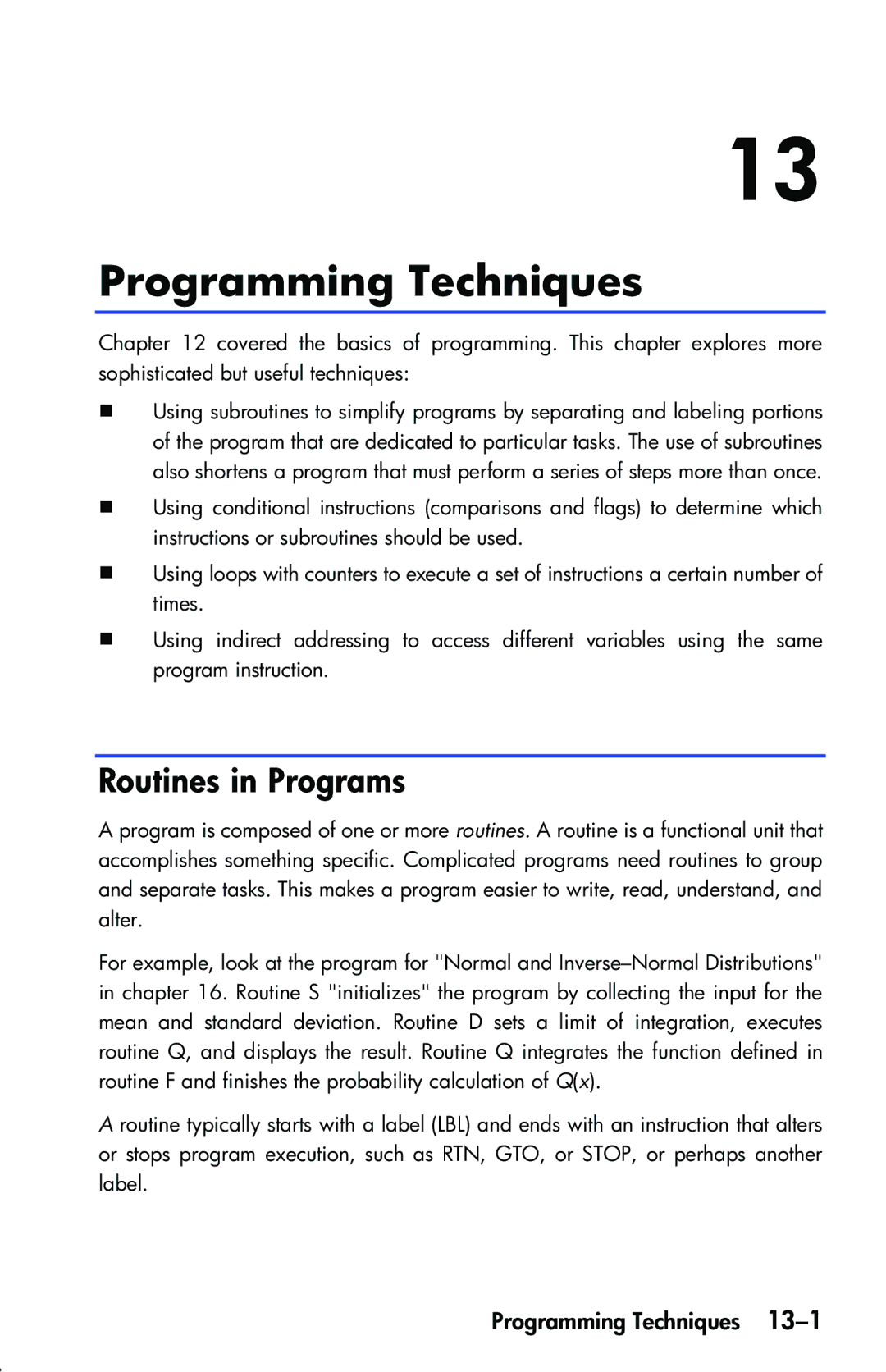
13
Programming Techniques
Chapter 12 covered the basics of programming. This chapter explores more sophisticated but useful techniques:
Using subroutines to simplify programs by separating and labeling portions of the program that are dedicated to particular tasks. The use of subroutines also shortens a program that must perform a series of steps more than once.
Using conditional instructions (comparisons and flags) to determine which instructions or subroutines should be used.
Using loops with counters to execute a set of instructions a certain number of times.
Using indirect addressing to access different variables using the same program instruction.
Routines in Programs
A program is composed of one or more routines. A routine is a functional unit that accomplishes something specific. Complicated programs need routines to group and separate tasks. This makes a program easier to write, read, understand, and alter.
For example, look at the program for "Normal and
A routine typically starts with a label (LBL) and ends with an instruction that alters or stops program execution, such as RTN, GTO, or STOP, or perhaps another label.
